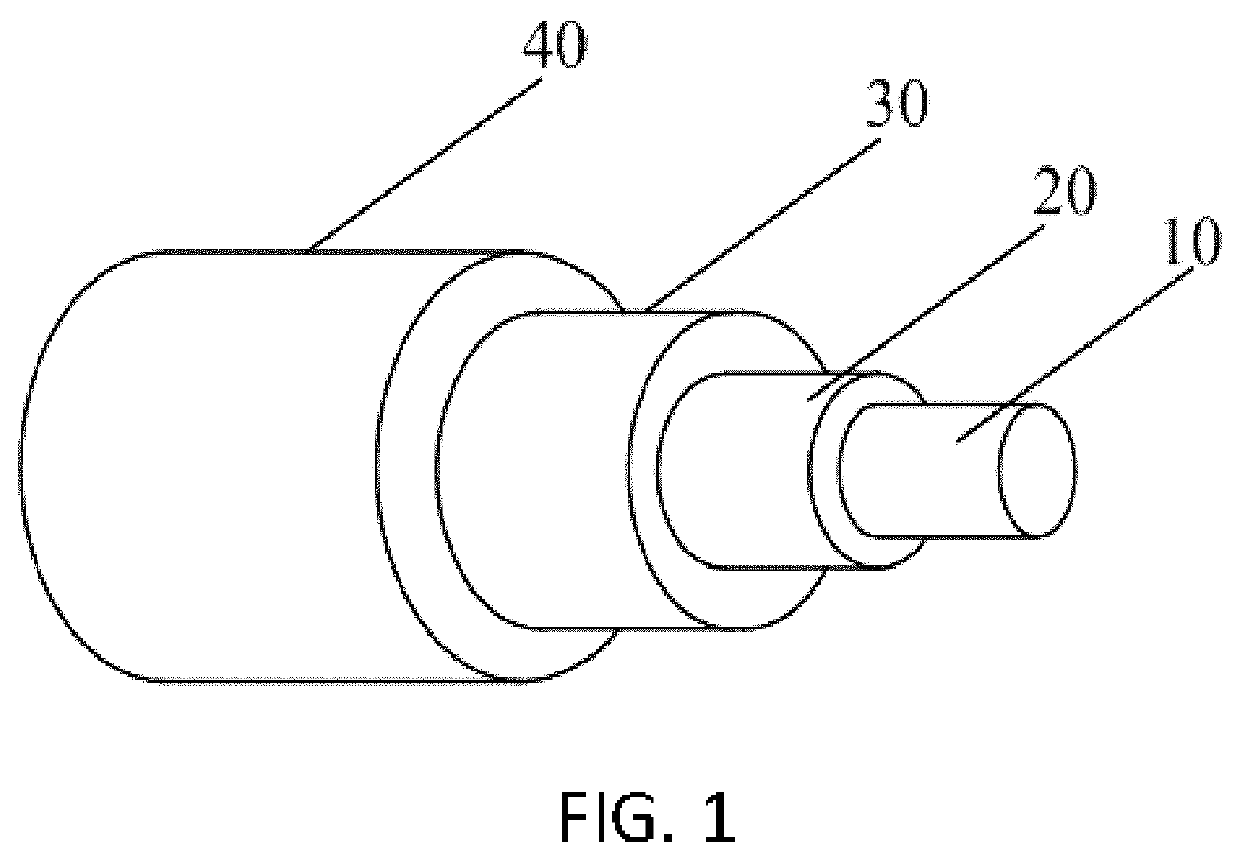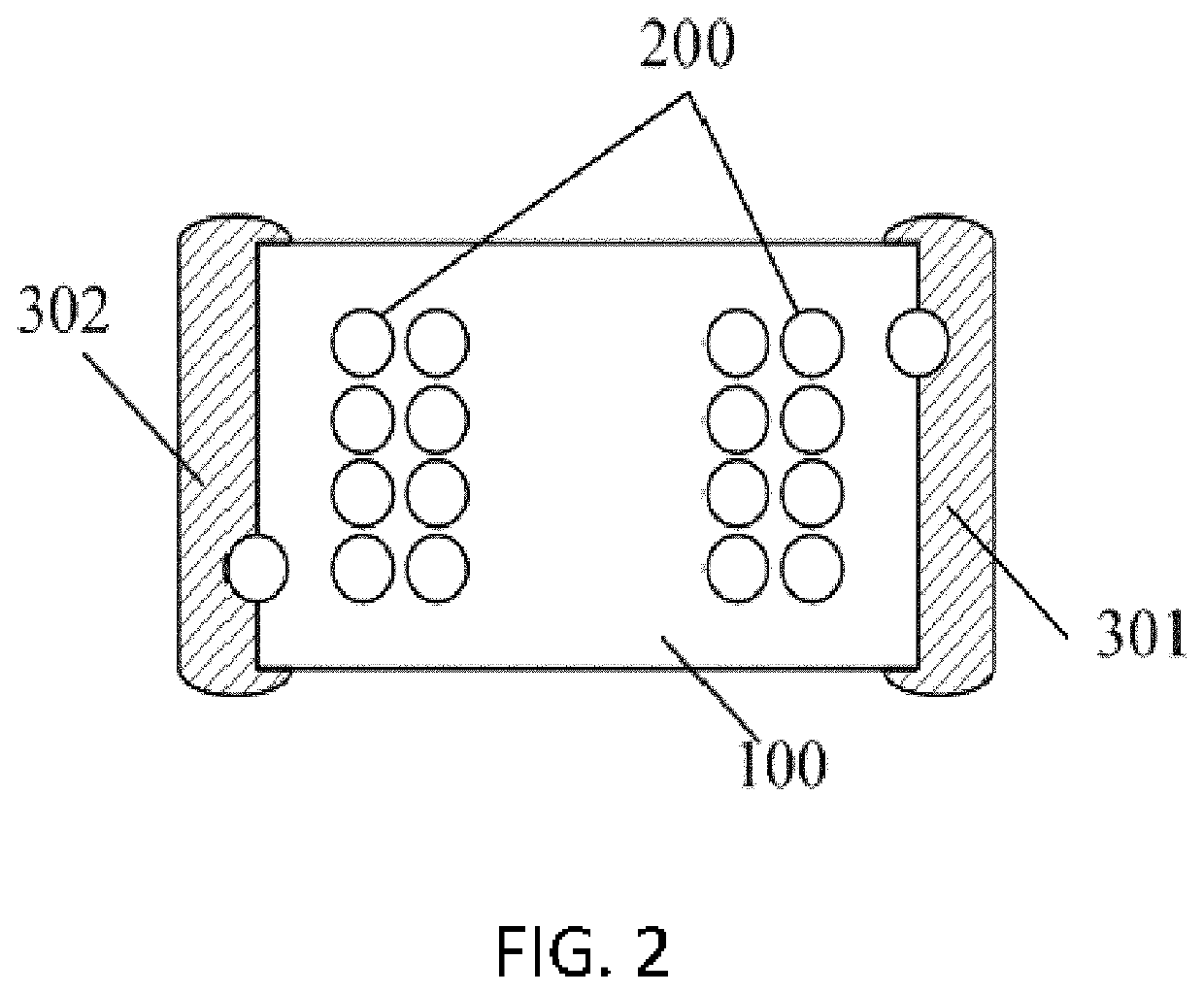Method for preparing a composite wire and a power inductor
a technology of power inductor and composite wire, which is applied in the direction of insulating conductors/cables, cables, insulated conductors, etc., can solve the problems of high manufacturing cost of wrapping the mesoporous inorganic oxide layer on the surface of the conductor, the inorganic wrapping layer is likely to fall off during winding, and the moisture resistance and weather resistance are relatively poor. , to achieve the effect of good weather resistance and not easily falling o
- Summary
- Abstract
- Description
- Claims
- Application Information
AI Technical Summary
Benefits of technology
Problems solved by technology
Method used
Image
Examples
Embodiment Construction
[0033]The following further describes the present application with reference to the accompanying drawings and preferred implementations.
[0034]An embodiment of the present application provides a composite wire comprising an easily-passivated metal layer. The composite wire comprises a metal inner core, an easily-passivated metal layer wrapping a surface of the metal inner core, and a self-adhesive resin layer wrapping a surface of the easily-passivated metal layer. An insulation layer of the composite wire is a metal passivation layer that is formed by the easily-passivated metal layer after sintering treatment and oxidation.
[0035]The metal inner core of the composite wire may be, for example, a silver wire, an aluminum wire, or a nickel-plated copper wire, and the nickel-plated copper wire is preferably used because the nickel-plated copper wire has better high-temperature resistance and conductive performance is less affected by a high temperature. When the nickel-plated copper wir...
PUM
| Property | Measurement | Unit |
|---|---|---|
| temperature | aaaaa | aaaaa |
| temperature | aaaaa | aaaaa |
| thickness | aaaaa | aaaaa |
Abstract
Description
Claims
Application Information
 Login to View More
Login to View More - R&D
- Intellectual Property
- Life Sciences
- Materials
- Tech Scout
- Unparalleled Data Quality
- Higher Quality Content
- 60% Fewer Hallucinations
Browse by: Latest US Patents, China's latest patents, Technical Efficacy Thesaurus, Application Domain, Technology Topic, Popular Technical Reports.
© 2025 PatSnap. All rights reserved.Legal|Privacy policy|Modern Slavery Act Transparency Statement|Sitemap|About US| Contact US: help@patsnap.com


